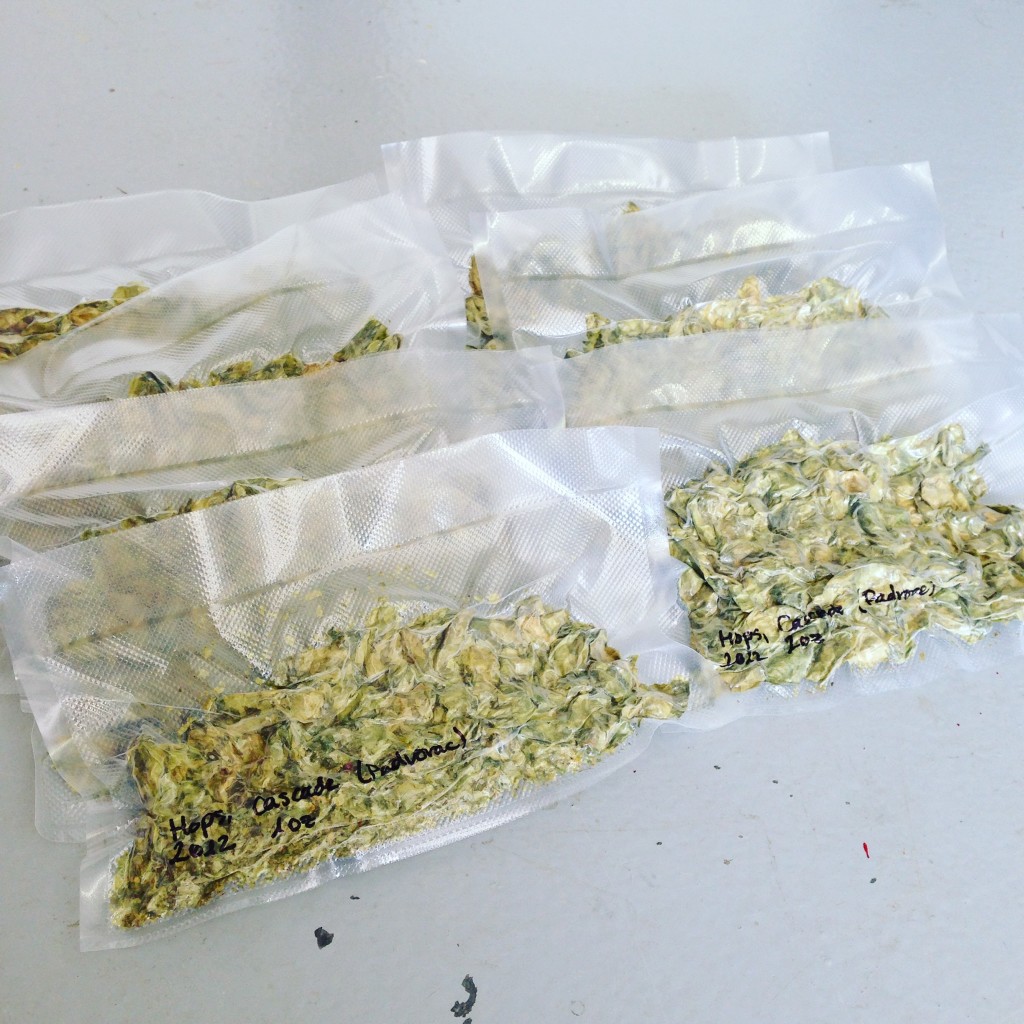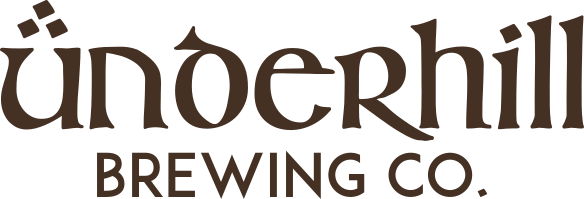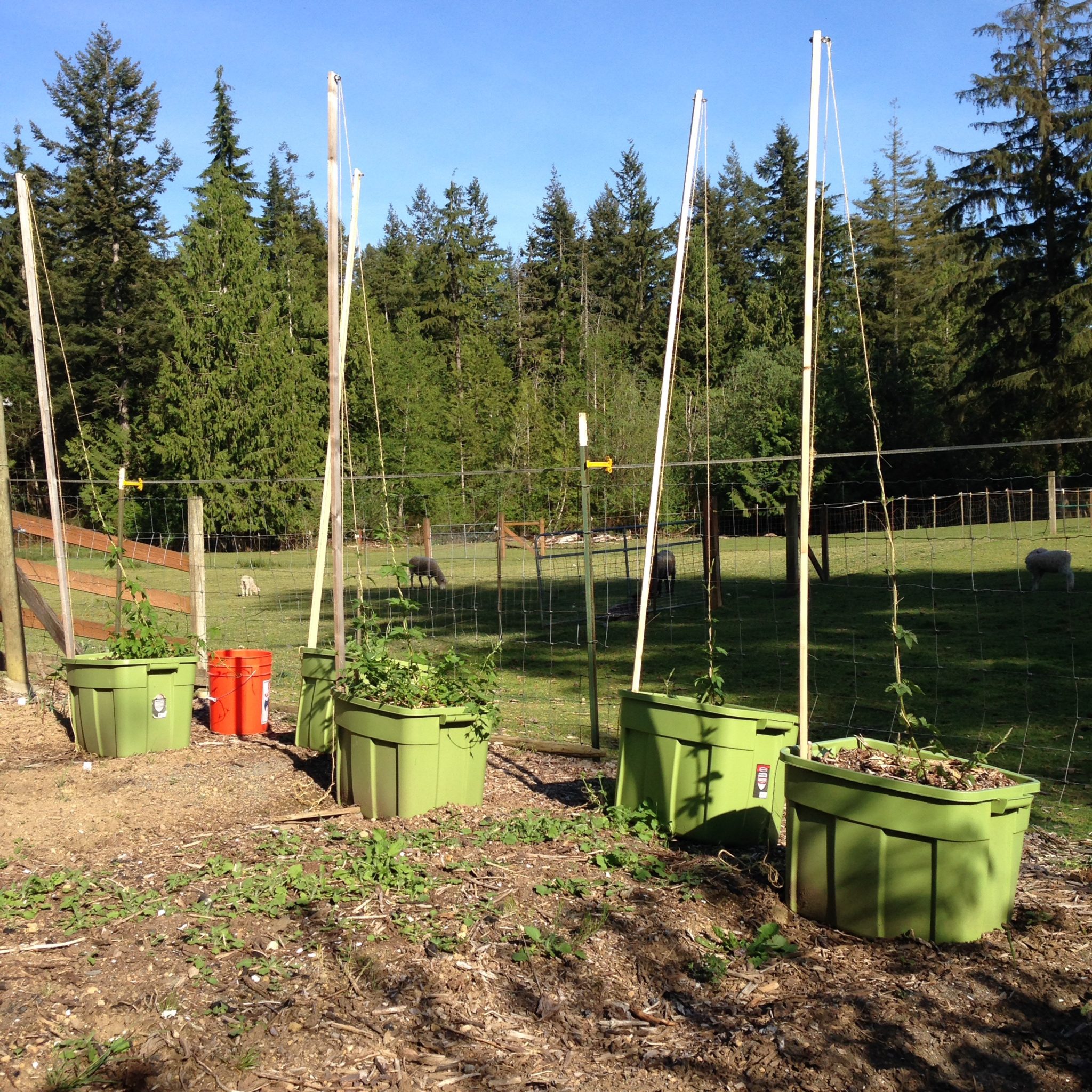Last year, I purchased 3 hop rhizomes and planted them in containers, and the Underhill Hopyard was born. I used large Rubbermaid bins with holes drilled in the bottom as the containers, and built adjustable trellises for them based on an article in Brew Your Own magazine, which worked really well. I purchased Cascade, Willamette, and Mt. Hood rhizomes, focusing on Northwest US varieties knowing that they grow well around here. Hops don’t hit their stride until around the third year, so the first year harvest was pretty meager, but I was able to make use of a few ounces of wet hops in a couple beers.
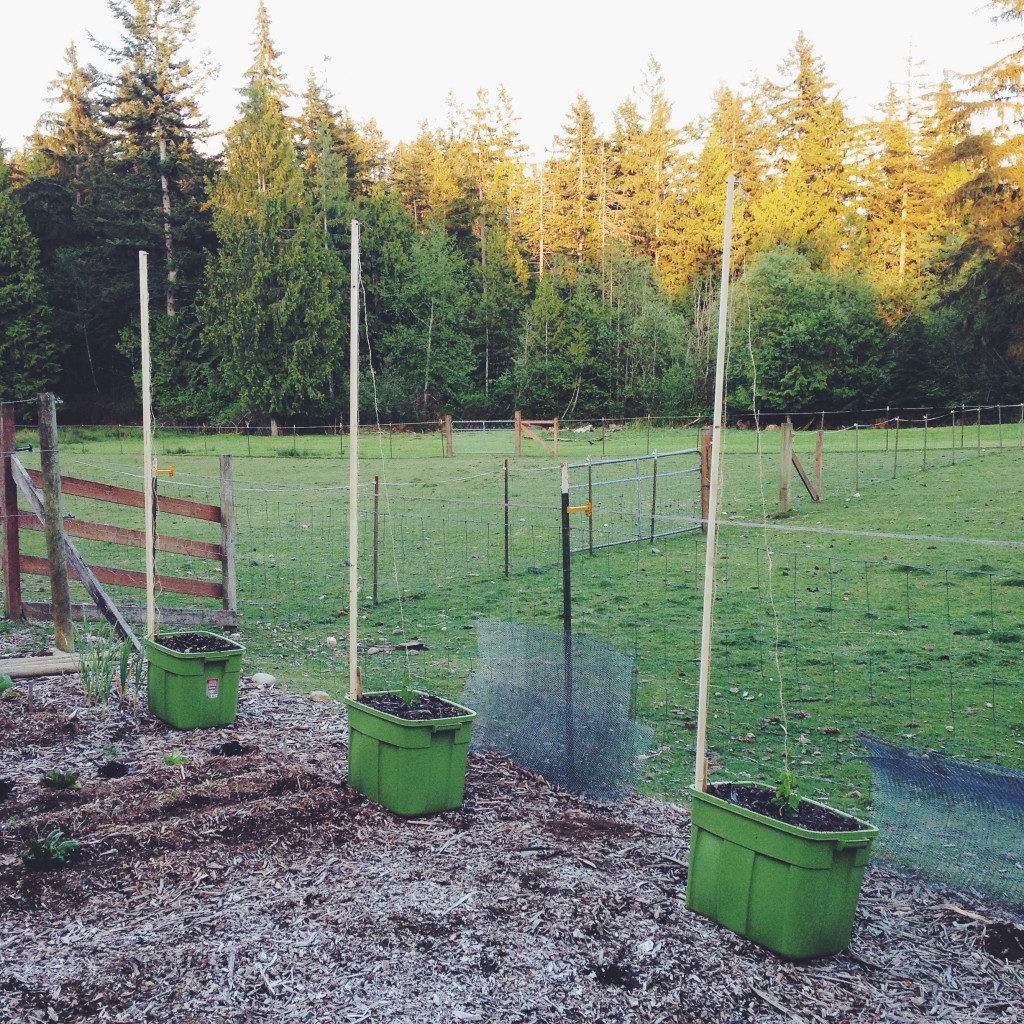
This year, I picked up a couple more varieties, and now have a total of 5 containers, adding Chinook and Centennial. These two Northwest natives are both higher in alpha acids than the other varieties, which means I need fewer ounces to achieve the same level of bittering, but they also work well as flavor and aroma hops.
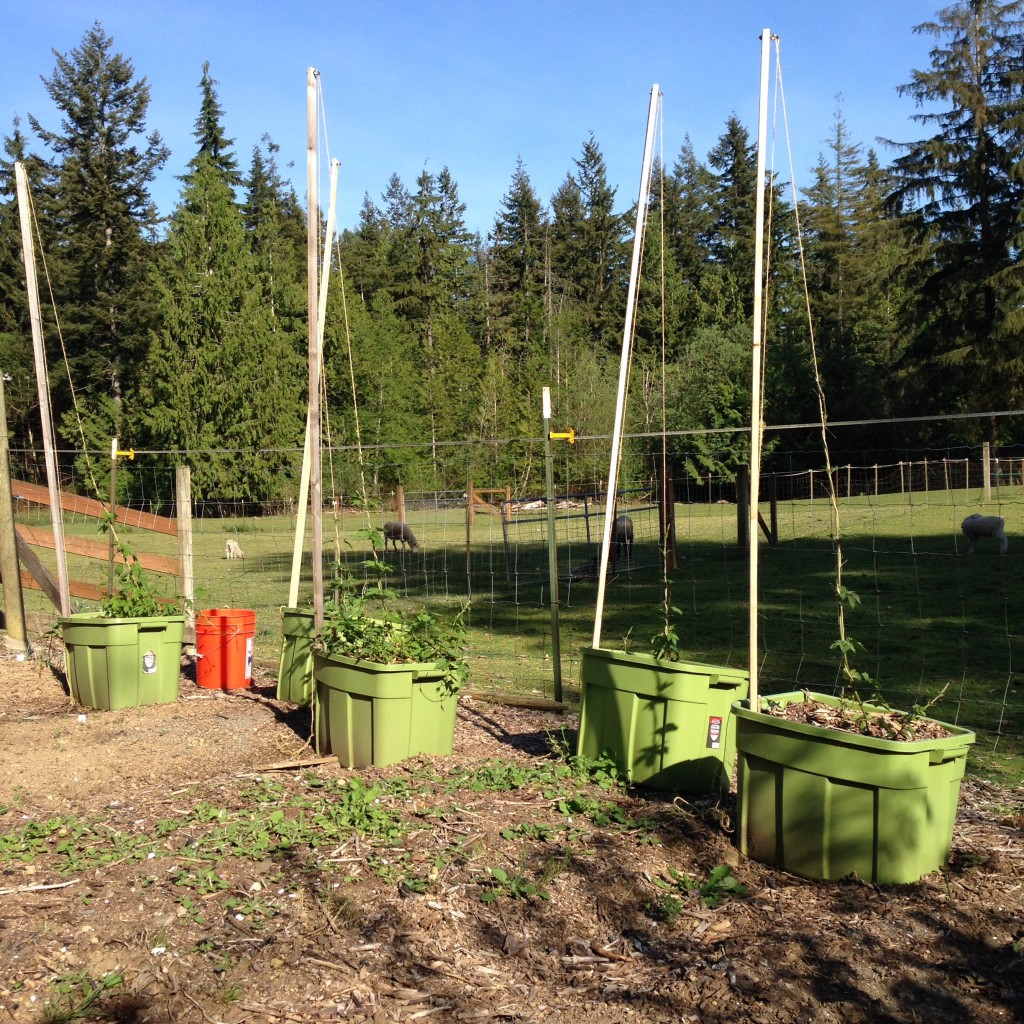
With the warm weather we’ve been having this early in the spring, the hops have really taken off already. They need plenty of water, but they love the sun, and are actually pretty easy to grow. Harvesting goes pretty quickly (especially with a few extra hands), and now that I have an oast (which is basically a dehydrator specifically for drying hops), I can efficiently dry my harvest in the fall, then vacuum seal and freeze them for use throughout the year.
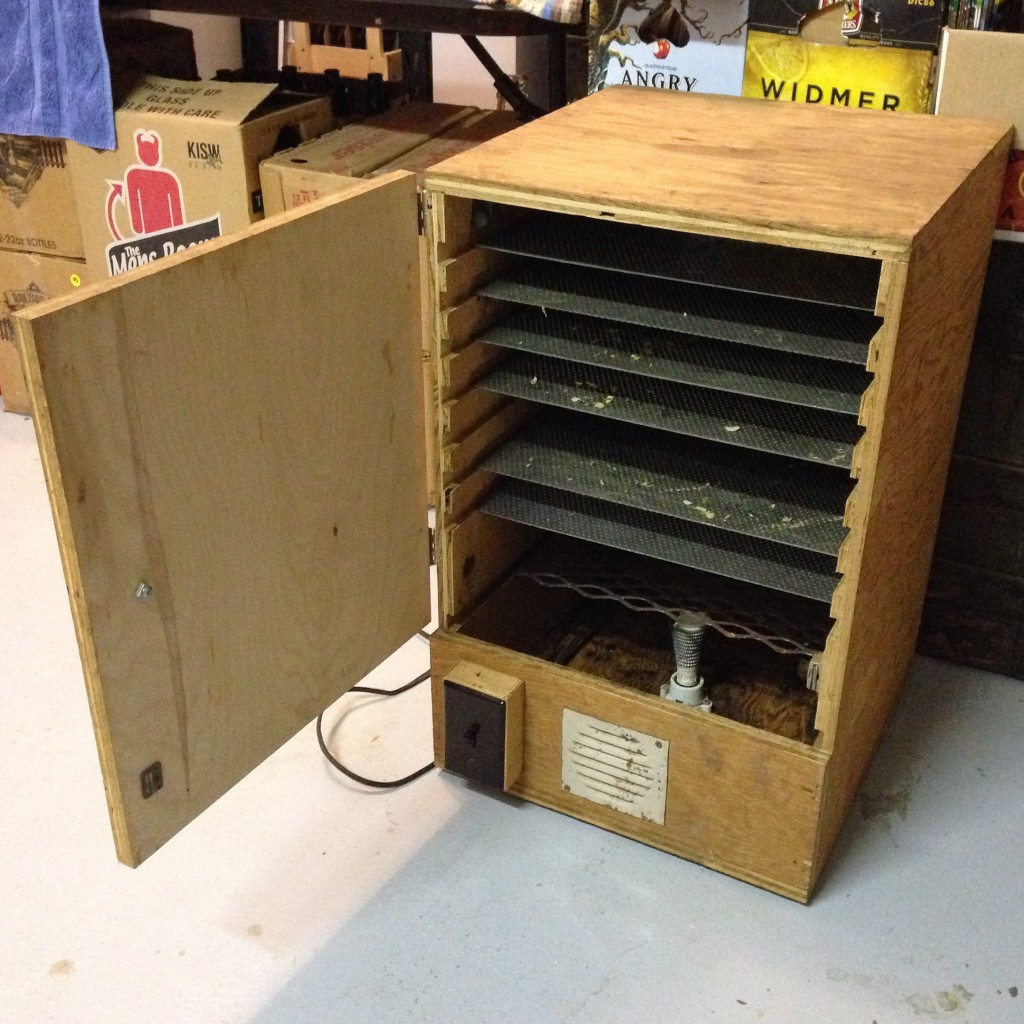
To make full use of this year’s crop, I’m planning on brewing a Harvest Ale that utilizes 100% homegrown hops. It’ll be a bit of a gamble, since I won’t know the exact levels of alpha acids to calculate bitterness, but it should be tasty nonetheless. Keep an eye out for it at our tastings this fall!
